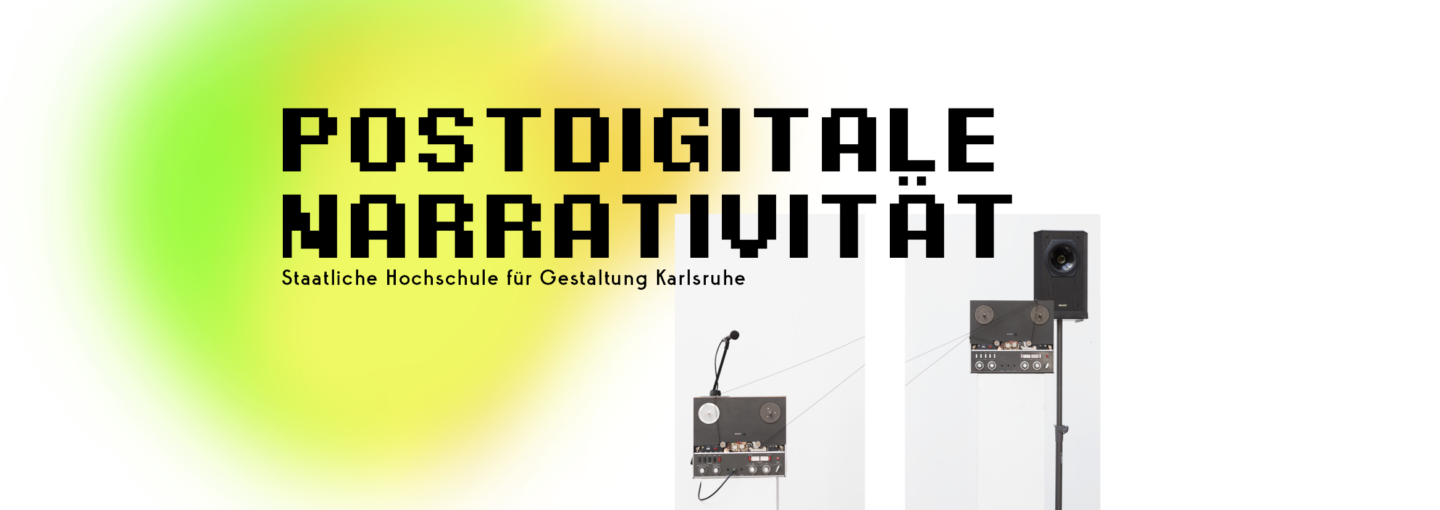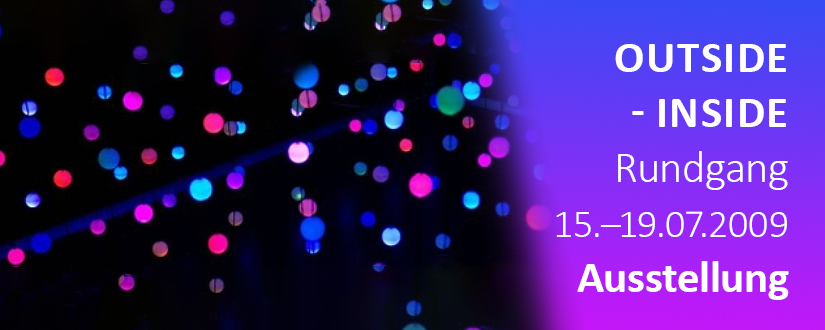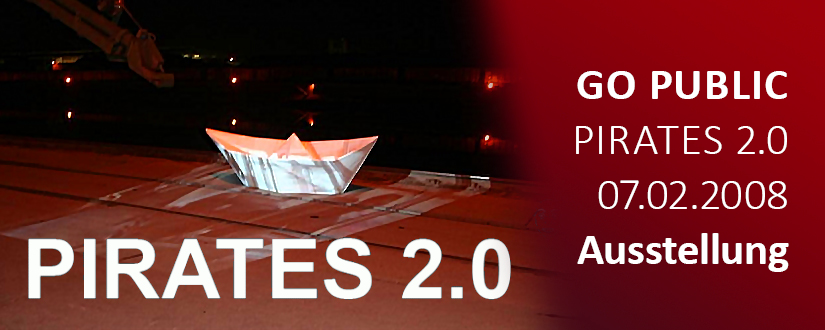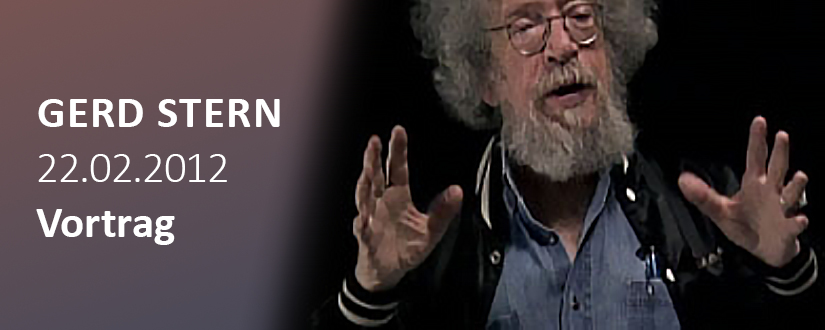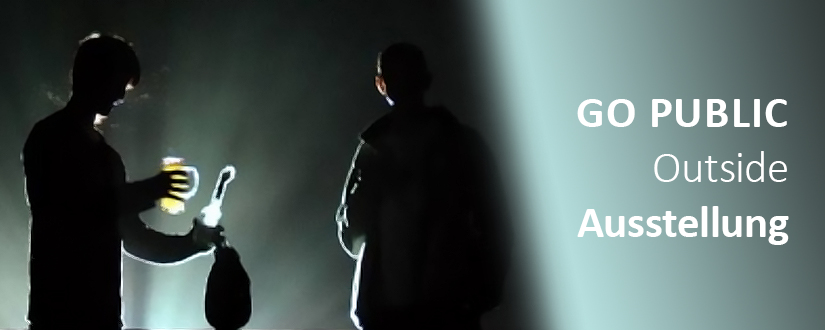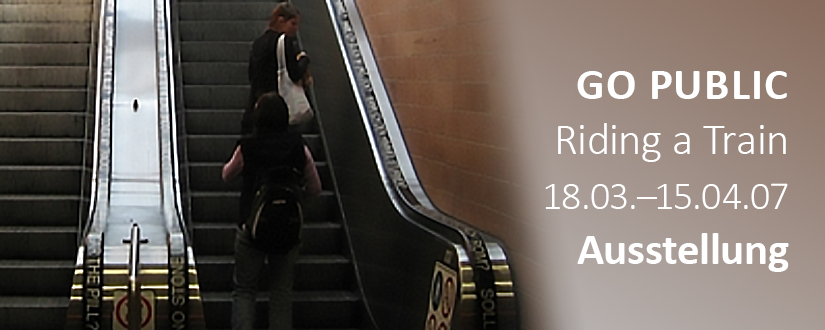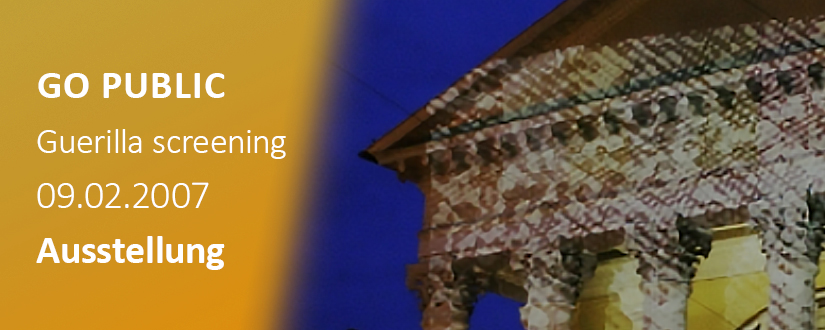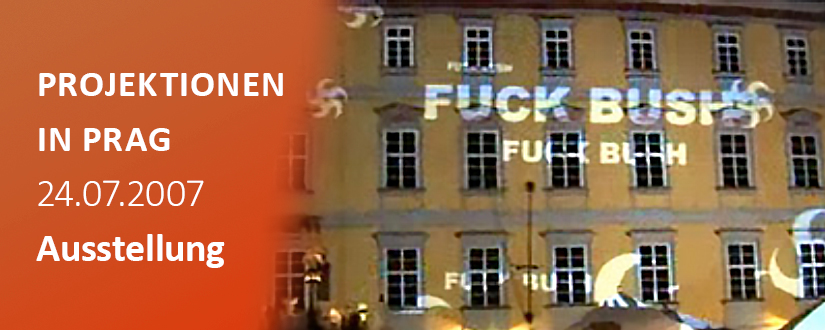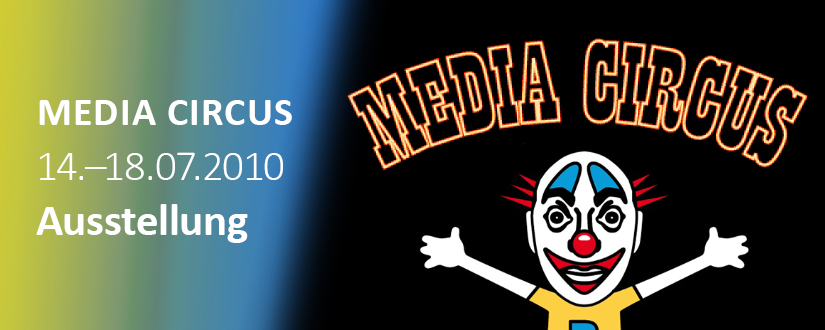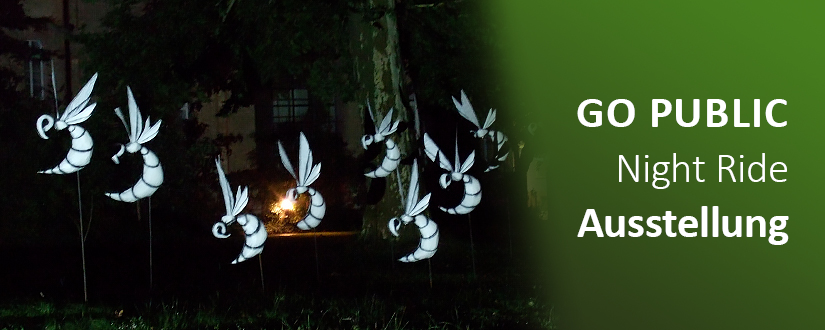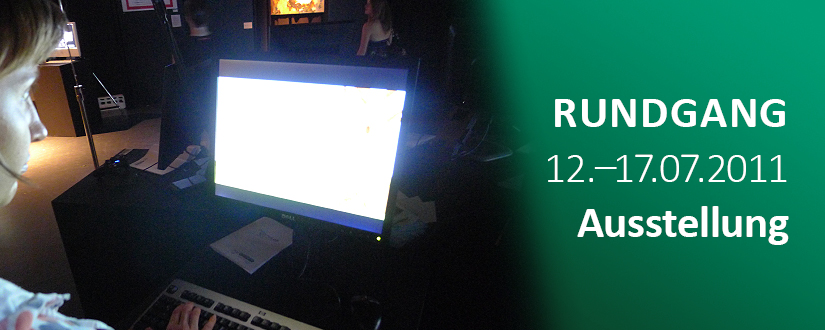Nächstes Projekt ist das nächtliche Happening “Pirates 2.0” am 7. Februar 2008. Dieses findet ab Einbruch der Dunkelheit auf dem Gelände des Rheinhafens in Karlsruhe statt. Präsentiert werden beeindruckende Installationen und Performances verschiedenster künstlerischer Bereiche.
Das Areal stellt interessante Herausforderungen an das Ausstellungskonzept. Stille Gleise, Architektur verschiedener Stilrichtungen, steppenartige Natur und Schrottberge kennzeichnen die Umgebung des Hafenbeckens. Das abwechslungsreiche Ambiente bietet viel Raum für grenzenlose Experimentierfreude.
GoPublic schafft tiefgreifendes Erleben, durch sehr individuelle Einzelprojekte innerhalb einer Gruppenausstellung. Diese spiegelt die persönliche Vielfalt und Multikultur der Beteiligten und regt das Interesse aller Besucher an.
Die Stille des Sonnenuntergangs am Hafenbecken wird schlagartig gebrochen. Ratternde Generatoren ertönen entlang der ganzen Werftstraße. Auf den Lagerhallen flackern Lichtprojektionen auf.
Weitab der Hauptanziehungspunkte Karlsruhes liegt der Aktionsort von “PIRATES 2.0”.
Es ist Go Publics dritte Ausstellung, unter Einsatz aller, inzwischen umfangreich erweiterten, Gerätschaften. Bisher wurde Kunst direkt zum Publikum gebracht. Diesmal ist es anders. Das Ambiente des Hafens lässt sich nicht in die Stadtmitte transportieren. Der Ansturm ist groß, um Kunst zwischen Lagerhallen, Docks, der Raffinerie und Schrottbergen, zu erleben.
Erste Besucher sind zwei Streifenpolizisten, welche den Veranstaltungshinweis von Anwohnern bekommen haben. Beeindruckt vom Guerilla-Konzept, kommen diese sogar ein zweites Mal.
Die Gruppe unter sich ist ebenso neugierig wie das Publikum. Nicht wenige der Ausstellungsprojekte sind erst Stunden zuvor konzipiert worden. Die Arbeiten sind bemerkenswert unterschiedlich und spiegeln die Multikultur von GoPublic wieder. Die Steinzeit der Videospieleära wird in die Gegenwart berufen. Eine Schlange steht an, um Supermario auf der Wand einer verlassenen Fabrikhalle zu spielen. Wenige Meter daneben entsteht ein dreidimensionales Bild aus geplatzten und luftgefüllten Ballons. Furchterregende Schreie ertönen vom Ende der Straße. Mit einem Mikrophon gewappnet, begeben sich Mutige in einen scheinbar endlosen dunklen Tunnel, an dessen Ende ein Licht scheint. Im Gang erstreckt sich der eigene Schatten vom Anfang bis zum Ende und spielt mit dem hoffnungsvollen Licht in der Ferne. Umkehren ist jederzeit möglich und mit einem Mikrofon wird mit der Außenwelt kommuniziert. Die Lautstärke ist auf Maximum aufgedreht. Auf dem Boden liegen Schaufeln und Besen, deren Stiele hochspringen. Jemand spielt Posaune, andere rappen, schreien, tanzen. Wieder andere trauen sich erst gar nicht hinein. Es ist eine Faszination, die Gänsehaut einjagt. Zum Abschluss wird ein großes Papierboot ins Wasser gelassen. Unter Jubeln und Klatschen versinkt es langsam unter der stillen Wasseroberfläche.
_ _ _ _ _ _ _ _ _
English version
The next project is the night happening “Pirates 2.0” on February 7th 2008. It will start at dusk on the premises of the Rhein harbor in Karlsruhe. Impressive installations and performances from a variety of artistic fields will be presented.
The site presents interesting challenges to the exhibition concept. Silent tracks, different architectural styles, natural steppe and mountain of scrap characterize the environment of the basin. The varied ambience allows for much room for boundless experimentation. GoPublic provides profound experience through individual projects within a group exhibition. It reflects the personal diversity and multiculturalism of the participants and encourages the interest of all visitors.
The silence of the sunset at the harbor is broken abruptly. Rattling generators sound along the entire Werftstreet. On warehouses flickering light projections appear. Off-site from the main attractions of Karlsruhe lies the place of action of “PIRATES 2.0”.
It is Go Public’s third exhibition, using all, now greatly expanded, equipment. Previously art was brought directly to the audience. This time it’s different. The ambience of the harbor can not be transported into the city center. There is a big run on experiencing art between warehouses, docks, the refinery and the waste mountains.
The first visitors are two patrol officers who have received an event announcement from local residents. Impressed by the guerrilla concept, the two even return for a second visit.
The group itself is just as curious as the audience. Quite a number of exhibition projects have been conceived only hours ago. The works are remarkably different and reflect the multiculturalism of GoPublic. The stone age of the video game era is appointed to the present. A queue is lining up to play Super Mario on the wall of an abandoned factory building. A few meters away, a three dimensional image is created by exploded and air-filled balloons. Terrifying screams sound from down the street. Equipped with a microphone, brave ones repair to seemingly endless dark tunnel, where a light appears at the end. In the corridor their own shadow extends from the beginning to the end and plays with the hopeful light in the distance. Turning back is possible at any time and communication with the outside world is possible through the microphone. The volume is turned up to the maximum. On the ground there are shovels and brooms, their stems jump up. Someone plays trombone, others rap, scream, dance. Still others do not dare entering. There is a fascination that scares goosebumps. At the end a large paper boat is lowered into the water. Under cheering and clapping it slowly sinks below the still water surface.
